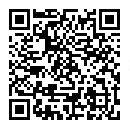报告人: Wageningen大学Pierre de Wit院士教授
报告时间:
报告地点:华家池校区团结馆二楼212多媒体室
报告题目:
Fungal effectors and effector-triggered immunity in plants with emphasis on the pathosystem Cladosporium fulvum-tomato
摘要:
Cladosporium fulvum is a biotrophic pathogen that causes leaf mould of tomato. So far, ten effectors have been identified from this fungus including avirulence (Avrs: Avr2, Avr4, Avr4E and Avr9) and extracellular proteins (Ecps: Ecp1, Ecp2, Ecp4, Ecp5, Ecp6 and Ecp7). All Avrs and Ecps are assumed to be virulence factors. Avr2 is an inhibitor of apoplastic plant cysteine proteases and Avr4 is a chitin-binding protein that protects chitin present in the cell walls of fungi against deleterious effects of plant chitinases during infection. Ecp6 contains chitin-binding LysM domains that are supposed to bind chitin fragments released in the apoplast during infection. Recently we have sequenced the genome of race 0 of C. fulvum that enabled us to perform initial comparative genome analyses with other sequenced members of the plant pathogenic Dothideomycetes. So far, the genome of C. fulvum is most related to Mycosphaerella fijiensis the causal agent of black Sigatoka, a devastating fungal disease of banana. We have identified functional homologues of C. fulvum Avr4, Ecp2 and Ecp6 effectors in Dothideomycetes, including M. fijiensis, M. graminicola, Cercospora nicotianae and C. beticola. We have also shown that Avr4 and Ecp2 are not only structural but also functional homologues of the C. fulvum effectors. M. fijiensis Avr4 and M. fijiensis Ecp2 homologues are recognized and give a hypersensitive response in tomato plants carrying resistance genes Cf-4 and Cf-Ecp2, respectively.
欢迎各位老师和研究生参加!
报告联系人:蔡新忠 (电话:86971964)
Pierre de Wit教授简介
1999年当选荷兰皇家人文和科学院院士(Member Royal Netherlands Academy of Arts and Sciences (KNAW))。
1999-2004年为Wageningen大学实验植物学研究生院院长(Director Graduate School Experimental Plant Sciences)。
现为Wageningen大学植物病理学总负责人,生物系统基因组学中心主任(Scientific director Centre for Biosystems Genomics)。
Pierre de Wit教授为资深植物病理学家,从事番茄与叶霉菌(Cladosporiun fulvum)互作机理研究30多年。他实验室在世界上最早克隆了真菌无毒基因(Cladosporiun fulvum无毒基因Avr9和Avr4),在番茄与叶霉菌互作机理方面取得许多突破性成果。在Nature,Science,Plant Cell, PNAS, Plant Journal, Annual Review of Phytopathology, Molecular Microbiology, Plant Physiology, Journal of Biological Chemistry, Molecular Plant-Microbe Interactions, Plant Molecular Biology等国际植物科学和植物病理学核心期刊发表论文150多篇,被引用共4350多次,H指数(h-factor)高达40 (即40 publications are cited forty times or more), 为植物病理学发展,尤其是植物与病原物互作分子机理方面的理解,作出了重要贡献。他多次主持有关植物病理学的国际大会,担任国际上多所大学和研究机构的研究顾问,为2005-2007年IS-MPMI(分子植物-微生物互作国际学会)主席。曾任Plant Journal,MPMI,Molecular Breeding,Current Genetics等多种国际植物科学和植物病理学核心期刊的编委, 现任Molecular Breeding,Fungal Genetics and Biology,Phytoparasitica,Faculty 1000 Plant Biology等期刊编辑。2003年被ISI选为高引用作者(Elected as highly cited author by ISI); 2007年被美国植病学会授予Noel T. Keen分子植病杰出奖(Noel T. Keen award for excellence in molecular plant pathology (award from APS: American Phytopathological Society)).
部分代表性论文:
Van Kan, JAL, Van den Ackerveken, AFJM and De Wit, PJGM (1991). Cloning and characterization of cDNA of avirulence gene avr9 of the fungal pathogen Cladosporium fulvum, causal agent of tomato leaf mould. Molecular Plant-Microbe Interactions 4, 52-59.
Joosten, MHAJ, Cozijnsen, AJ and De Wit, PJGM (1994). Host resistance to a fungal tomato pathogen lost by a single base-pair change in an avirulence gene. Nature 367, 384-387.
Kooman-Gersmann, M, Honée, G, Bonnema, G, and De Wit, PJGM (1996). A high affinity binding site for the AVR9 peptide elicitor of Cladosporium fulvum is present on plasma membranes of tomato and other solanceous plants The Plant Cell 8, 929-938.
Laugé R, Joosten MHAJ, Haanstra J.P.W., Goodwin, P.H., Lindhout, P., and de Wit, P.J.G.M. (1998). Successful search for a resistance gene in tomato targeted against a virulence factor of a fungal pathogen Proceedings of the National Academy of Sciences USA 95, 14-9018.
Van der Hoorn, RAL, Kruijt, M, Roth, R, Brandwagt, BF, Joosten, MHAJ, de Wit, PJGM (2001). Intragenic recombination generated two distinct Cf genes that mediate AVR9 recognition in the natural population Lycopersicon pimpinellifolium. Proceedings of the
Luderer, R, Rivas, S, Nurnberger, T, Mattei, B, Hooven, HW, Van der Hoorn, RAL, Romeis, T, Wehrfritz, JM, Blume, B, Nennstiel, D, Zuidema, D, Vervoort, J, Lorenzo, G, Jones, JDG, de Wit, PJGM, Joosten, MHAJ (2001). No evidence for binding between resistance gene product Cf-9 of tomato and avirulence gene product AVR9 of Cladosporium fulvum. Molecular Plant-Microbe Interactions 14, 867-876.
Luderer, R, Takken, FLW, De Wit, PJGM, Joosten, MHAJ (2002). Cladosporium fulvum overcomes Cf-2-mediated resistance by producing truncated AVR2 elicitor proteins. Molecular Microbiology 45, 875-884.
Van den Burg, H.A., Westerink, N., Francoijs, K.-J., Roth, R., Woestenenk, Boeren, S., De Wit, P.J.G.M., Joosten, M.H.A.J., and Vervoort, J. (2004) Natural disulfide bond disrupted mutants of AVR4 of the tomato pathogen Cladosporium fulvum are sensitive to proteolysis circumventing Cf-4 mediated resistance but retain their chitin-binding ability. Journal of Biological Chemistry 278, 27340-27346.
Rooney, HCE., van ‘t Klooster, JW, van der Hoorn, RAL Joosten, MHAJ, Jones, JDG and de Wit, PJGM (2005).Cladosporium Avr2 inhibits tomato Rcr3 protease required for Cf-2-dependent disease resistance. Science, 308, 1783-1786, 2005.
Gabriels, SHEJ, Vossen, JH, Ekengren, SK, van Ooijen, G, Abd-El-Haliem, AM, van den Berg, GCM, Rainey, DY, Martin, GB, Takken, FLW, de Wit, PJGM, Joosten, MHAJ (2007). An NB-LRR protein required for HR signalling mediated by both extra- and intracellular resistance proteins. Plant Journal 50, 14-28.
Van Esse HP, van ‘t Klooster JW, Bolton MD, Yadeta K, van Baarlen P, Boeren S, Vervoort J, De Wit PJGM and Thomma BPHJ (2008). The Cladosporium fulvum virulence protein Avr2 inhibits host proteases required for basal defense. The Plant Cell 20, 1948�1963 (IF= 9,65).
Bolton, MD, Van Esse, HP, Vossen, JH, De Jonge, R, Stergiopoulos, I, Stulemeijer, IJE, Van Den Berg, GCM, Borras-Hidalgo, O, Dekker, HL, De Koster, CG, De Wit, PJGM, Joosten, MHAJ and Thomma, BBHJ (2008) The novel Cladosporium fulvum lysin motif effector Ecp6 is a virulence factor with orthologues in other fungal species. Molecular Microbiology 69, 119-136.
Stergiopoulos, I and de Wit, PJGM (2009) Fungal effectors. Annual Review of Phytopathology 47, 233-263.

